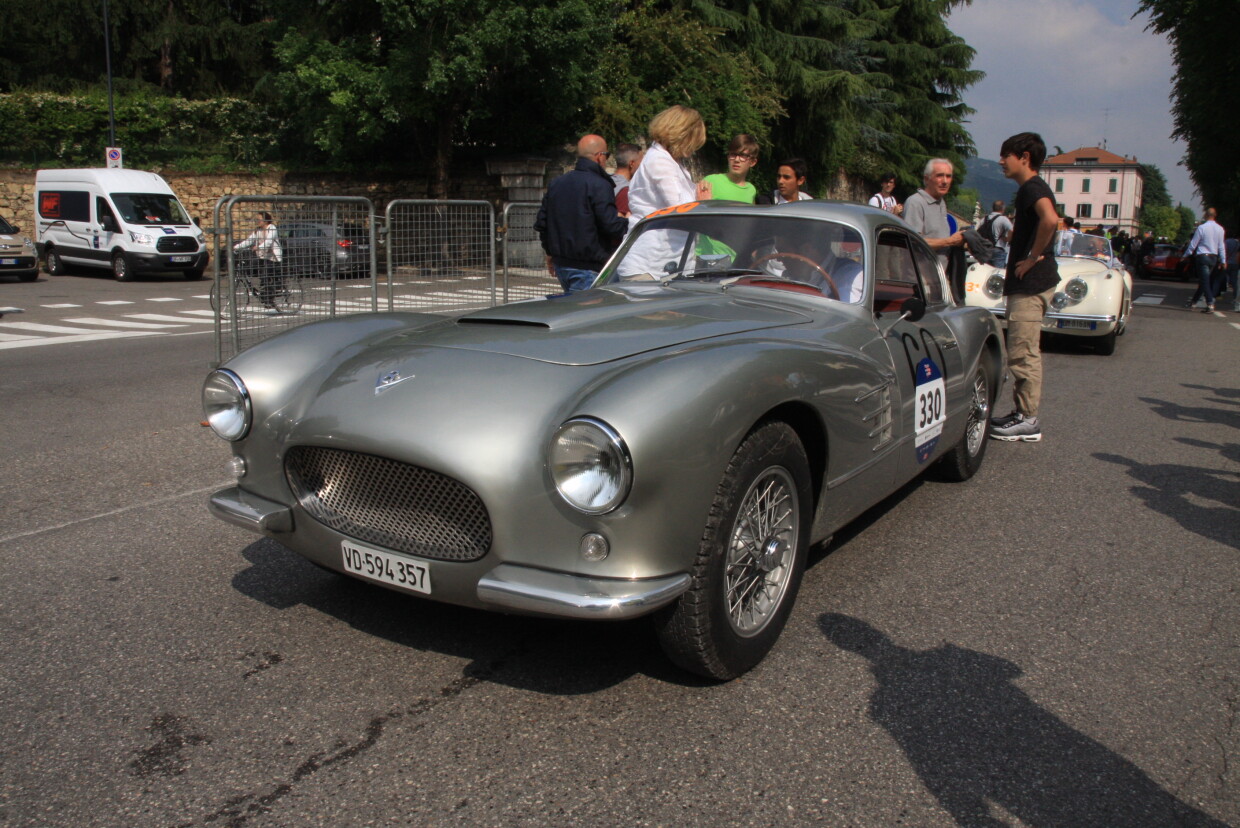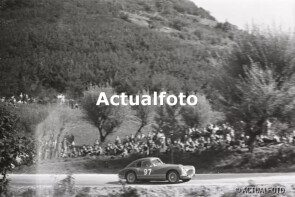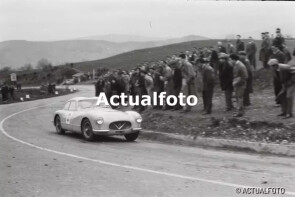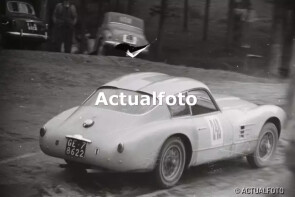
1955 Fiat 8V Elaborata Zagato
ON/OFF
Why am I an Automotive Masterpiece?
K. Famous chassis’ cars
Last of the five "Elaborata Zagato" made.
L. Limited edition cars
no. 5 manufactured, 5th built
In the postwar period, Fiat was working on an eight-cylinder engine internally known as Tipo 106. The engine was originally designed by Dante Giacosa for a luxury sedan, but that project was stopped. Rudolf Hruska, at the time working at the S.I.A.T.A., was given the task to design a car around the V8 engine. The development took place in absolute secrecy. As not to stress the experimental department of Fiat, production of the chassis was also taken up by S.I.A.T.A. Styled by chief designer Fabio Luigi Rapi, the Fiat 8V or “Otto Vù” was presented to the Italian press in February 1952 and first exhibited the following March at the Geneva Motor Show. The car shapes saw several changes in time: the prototype used an art deco grill extending into the hood which initially characterized the examples of the first series. A second series was made featuring four headlights with some of the later cars having a full-width windscreen. A high-performance coupé, destined to compete in the GT class: the 2-liter 8V model was a departure from the usual Fiat production. It was really welcomed by Italian private drivers, it inspired the tuners and it was, in a word, the car to beat in the 2-liter class, also thanks to the special versions built by Zagato or Siata. The Fiat V8 had a 70° V configuration of 1996 cc of displacement, at 5600 rpm the engine produced 105 hp in standard form with double two-barrel Weber 36 DCS carburetors, giving a top speed of 190 km/h. Some engines were fitted with two huge four-throat Weber 36 IF4/C carburetors offering 120 hp, but the intake manifold was very rare. The Fiat 8V is the only eight-cylinder built by Fiat. The engine was connected to a four speed gearbox. The car had independent suspension all round reworking the Fiat 1100 ones and drum brakes on four wheels. As the body was welded to the chassis it was a semi-unitary construction. Only 114 of these high-performance coupés had been produced, 64 of them with a “Fiat Carrozzerie Speciali” body, 34 first series and 30 second series. It was made available anyway in different body styles, offered by the factory and by various coachbuilders like Zagato, Pinin Farina, Ghia and Vignale. The production ceased in 1954.
The relationship between the Fiat 8V and Zagato began in 1952 when Ovidio Capelli, gentleman driver and FIAT dealer in Milan, commissioned a special body for his 8V chassis no. 000002 to Zagato. Cappelli was looking for a car that was lighter and faster than the production 8V designed by Fabio Luigi Rapi. The one-off was built in aluminum, embodied an “essential beauty” in terms of design, and had excellent racing qualities thanks to its lightness and agility. Cappelli’s victories convinced Fiat and Zagato to build together a small series of the 8V, leader in the GT class. Elio Zagato himself, as a perfect front man for the family business, also achieved good racing results with these cars. Carrozzeria Zagato bodied 31 cars, of which 22 were new from the bare chassis, and the other 9 were re-bodied examples originally with Fiat bodywork; within this group, there were six cars built with the famous “double bubble” roof, a one-off spider, and 5 “Elaborata”, derived from the Rapi-designed model. Zagato updated the “Carrozzerie Speciali Fiat” berlinetta modifying it with a different front and rear end and a modified cockpit: this version was called “Elaborata”. The position of the new double bubble roof was lower and featured a one-piece windscreen. The original Fiat front fenders were kept as far as the wheel centers; the front end was modified into a single head lamp configuration. The main idea was to build some prototypes and then offer the possibility to clients to modify existing 8Vs to this specification. Only five Elaborata were built, all being different in details.
1955 Fiat 8V Chassis no. 106.000109 is the last of the “Elaborata”. This car was delivered new in February 1955 as a basic Series II. Its first owner, Emanuele Quartara, raced several times with Chassis no. 106.000109 in this year. Then, In 1956, he had the car modified by Zagato into an Elaborata and continued to race, at least in 1956 and 1957 in important events with good results in its class. In 1961 the car was sold and its story continued in the United States.





